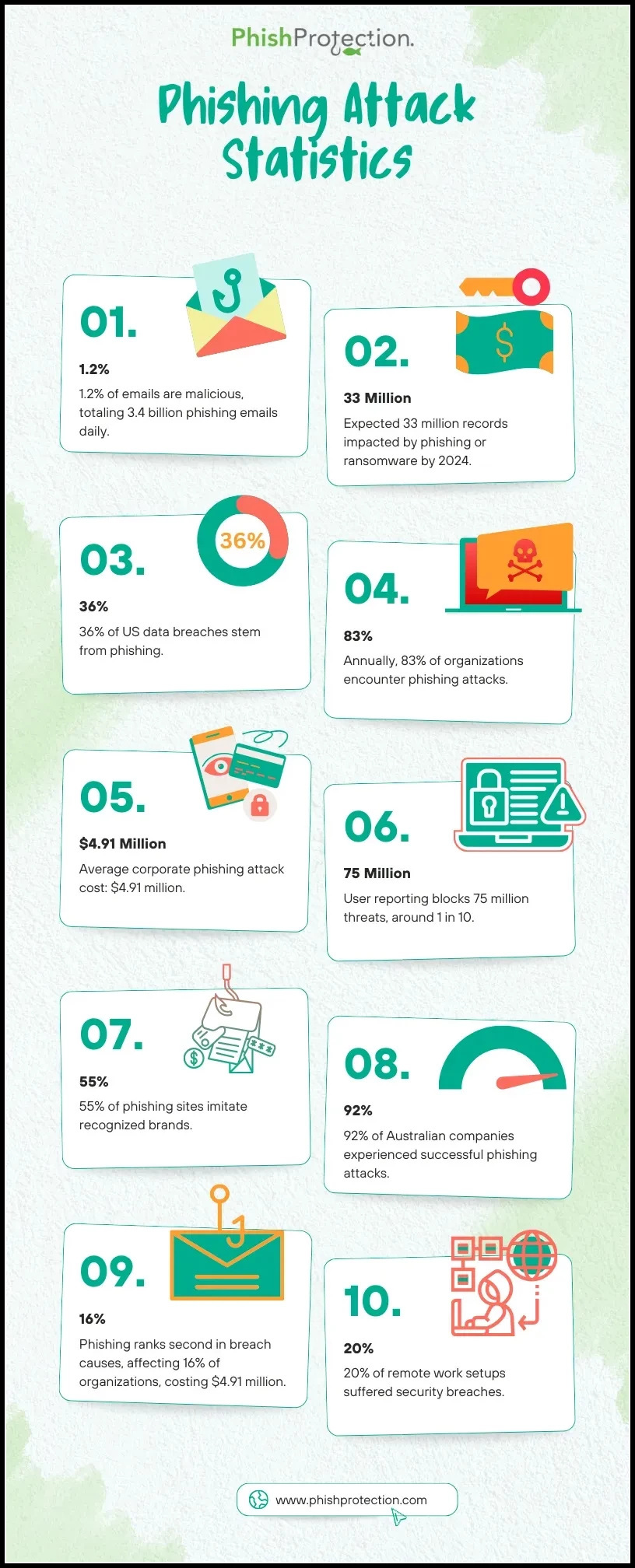Cybercrime instances have been increasing at an exponential rate in the past couple of decades. The expense of cybercrime is expected to go as high as $10.5 trillion by 2025!
With digital advancements, the risk of digital scams has equally escalated. Threat actors have found ways to peep into so-called secure systems of organizations as well as individuals to access sensitive data and crucial information.
And that’s exactly why it is necessary to stay digitally aware of the various fraudulent schemes and tactics that cybercriminals use to break into your system. Awareness and precaution are the two main factors that can lower the impact and put a full stop to the malicious intention of these scamsters.
This blog post revolves around phishing, smishing, and vishing—the three main fraud tactics used by threat actors worldwide. Scroll down to protect your sanity and hard-earned money from scammers.
More About Phishing, Smishing, and Vishing
Threat actors are perpetually in love with the idea of identity theft. They mimic big brands that are well-known names and enjoy a vast user base. Further, they reach out to you using any of these three tactics: phishing, smishing, and vishing. The ultimate goal of threat actors is to gain access to your personal data and make some money out of this identity theft.
Let’s understand each of these cybercrimes one by one!
Phishing
One of the most popular forms of cyber attack, phishing, involves fake emails that compel users to click on any malicious link. The link diverts users to a legitimate-looking page or form where they are required to fill in their personal details such as age, account details, passwords, usernames, etc. These sensitive details are then sent straight to the threat actors while the user stays unaware of the cyber attack.
For instance, a phishing actor might pose as a popular brand such as Microsoft and then send out malicious emails, claiming that your Microsoft account has been frozen or compromised and requires a password upgrade. If unawarely you click on the malicious link and enter your personal data; you are literally giving them access to your laptop/phone and all the data stored in it.
Now, the threat actor can misuse the data in any way they want to. They can directly break into your bank or blackmail you using your personal photographs or videos.
Smishing
We receive endless text messages, which are often ignored. However, will you ignore a text message seemingly sent out by your bank?
What if you receive a text message saying that your credit card has been blocked and that you need to click on a given link to re-activate your card?
This is exactly what threat actors do through smishing. They send out text messages and prep up the messages in a way that they look genuine. The malicious link either re-directs you to a fake page where you need to fill in your personal details or downloads malware into your system to gain direct access to your vital data.
Most of the time, people fall for this smishing trick, as clicking on a link seems easy and less time-consuming in order to solve a vital issue.
Vishing
Another crazy trick played by threat actors is vishing, which involves voice mails, audio notes, or fake calls made with the sole purpose of robbing you of your hard-earned money. These fraudsters can pose as customer care executives and request you to share sensitive details such as OTPs, passwords, date of birth, and so on. Or, they can pretend to be a close one who is stuck in an emergency and is in dire need of money.
To make it even easier, these threat actors can also ask you questions that require you to say “Yes.” They can record your voice and use it to authorize access to your accounts later.
How to Safeguard Your Data From Phishing, Smishing, or Vishing Attacks?
Now that you know about phishing, smishing, and vishing in detail, you must be wondering how to protect your data from these cyber scams! Below mentioned are a couple of sure-fire hacks that even cybersecurity professionals swear by.
- Always go through the email content a couple of times, especially where they ask you to share your personal details. Double-check the logos, signage, and other identity specifications. Look out for spelling errors, grammatical mistakes, and other silly mistakes that make the email suspicious. When in doubt, delete such an email immediately.
- Never share personal details such as OTPs and passwords with anyone over a voice call. Also, if your close ones call asking for monetary help or any kind of data, ask them about something that only the two of you know. If you find things suspicious, hang up on the call then and there.
- Avoid attending calls from unknown or suspicious numbers. Straightaway, block those numbers.
- Never click on a link from an unknown source. If you have any questions, you can always visit the official websites of brands and businesses to contact them.
- Use MFA or a multi-factor authentication system to prevent phishing attacks.
- Keep yourself updated about the latest industry trends, technological advancements, and cybercrime tactics. With adequate knowledge, you can easily protect yourself from cyberattacks.
- Use adept phishing protection tools/software that can safeguard your data by preventing any kind of data breach attempts and intercepting fraudulent activities.
- AI has made it easier for threat actors. Now, fake emails look polished and error-free. Using deep fake AI technology, they can even make video or audio calls to you posing as your friend or family. Be vigilant and stay on your toes always!
Wrapping Up!
It’s okay to feel overwhelmed by these high-tech cyber attacks. But vigilance, awareness, and education can keep you protected against potential cyber hazards.
Next time you get that phone call, email, or even a text message, remember that it can be a scamster on the other side, waiting for you to respond!



